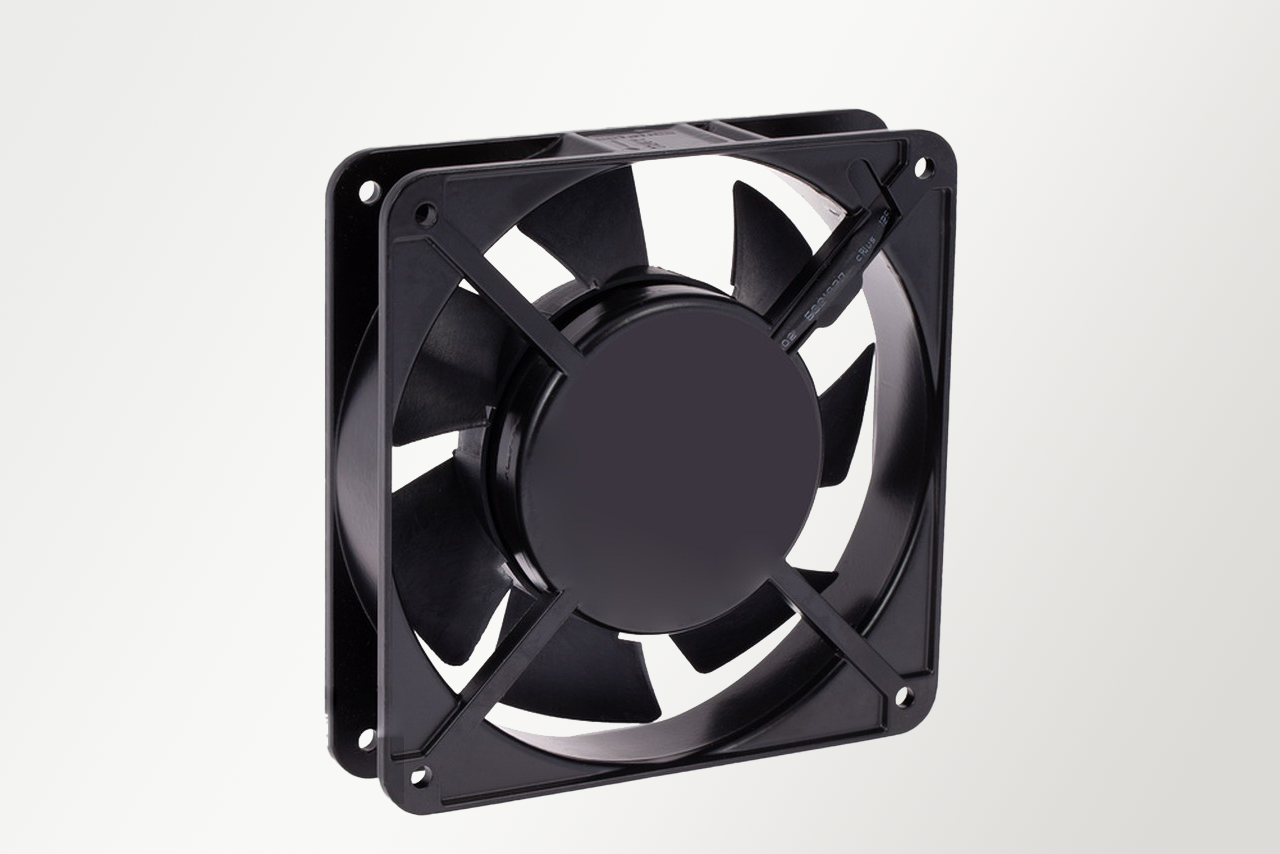As an indispensable component of modern electronic devices, cooling fans have gradually permeated every corner of our lives. From air conditioners and refrigerators to laptops, LCD TVs, and various kitchen appliances and industrial equipment, the role of cooling fans is ubiquitous. Today, Ruiapple Electric will share some lesser-known facts about cooling fans to help you better understand their working principles, functions, and maintenance details.

1. How DC Fans Work
DC fans, powered by a DC power supply, offer unique advantages such as high efficiency, low noise, and long lifespan. Their working principle involves an internal IC controller sensing magnetic field changes and switching the current direction, generating a rotating magnetic field in the stator. This rotating magnetic field interacts with the fixed magnetic field on the motor housing, driving the fan impeller to rotate and produce airflow for cooling. Due to their high efficiency and stability during startup and operation, DC fans are widely used in modern household appliances and industrial applications.
2. Roles of Capacitors and Resistors
In the circuit design of cooling fans, capacitors and resistors play critical roles:
Capacitors: Their primary function is to block DC current while allowing AC current to pass. Capacitors smooth out current fluctuations, preventing motor damage caused by irregular currents. They also regulate the startup current, ensuring smoother motor activation.
Resistors: Resistors are mainly used for current shunting and limiting. They effectively control current levels, preventing motor overload during operation and extending the fan's lifespan. Resistor values are typically designed based on the motor's power rating.
3. How to Distinguish Between Sleeve, Hydraulic, and Ball Bearings
The type of bearing in a cooling fan directly impacts its performance and lifespan. Common bearing types include sleeve, hydraulic, and ball bearings:
Sleeve Bearings: These bearings are usually unsealed and rely on a lubricating oil film to reduce friction. They are cost-effective and suitable for low-load, short-duration applications. However, their lifespan is relatively short, typically around 30,000 hours.
Hydraulic Bearings: Featuring a sealed design to prevent oil leakage, hydraulic bearings can withstand higher loads and operating temperatures. Their superior sealing ensures stable performance, making them ideal for continuous operation.
Ball Bearings: Ball bearings use metal balls to minimize friction, offering low noise and high stability. They are known for their long lifespan and consistent performance, making them suitable for high-end electronics and industrial fans. Ball bearing fans can last 50,000 to 80,000 hours.
4. Comparison of Sleeve and Ball Bearing Fans
Both types of fans have their pros and cons, catering to different application scenarios:
Sleeve Bearing Fans: Low cost and quieter initially, they are suitable for budget-friendly, low-load applications like household appliances. Their simple structure makes them easy to produce. However, their shorter lifespan (around 30,000 hours) and potential need for periodic lubrication are drawbacks.
Ball Bearing Fans: Although more expensive, they offer high performance, long lifespan, and stability. Ideal for high-load, continuous operation scenarios such as high-end computers, air conditioning systems, and industrial equipment, they can last 50,000 to 80,000 hours, providing long-term reliability.
5. What is Starting Voltage?
Starting voltage refers to the minimum voltage required for a fan to start smoothly. If the voltage is below this threshold, the fan may fail to start or operate unstably. Starting voltage is a critical design parameter, especially for high-performance or energy-efficient fans. DC fans typically have lower starting voltages than AC fans, making them suitable for portable devices and energy-saving applications.
6. Common Fan Failures and Troubleshooting
After prolonged use, fans may experience certain issues. Common causes include:
Abnormal Noise: Besides normal airflow sounds, unusual noises like friction or electromagnetic sounds often indicate internal component wear, such as bearing damage or impeller-casing contact.
Vibration: Imbalanced impellers, often caused by long-term use or improper installation, can lead to fan vibration, affecting device performance.
Frame Overrun: Manufacturing defects or environmental factors can cause the stator to exceed design tolerances, increasing the gap between the stator and rotor. This issue can lead to higher noise, increased vibration, and reduced lifespan.
Unique Advantages of Ruiapple Electric Fans
As a leading brand in cooling fans, Ruiapple Electric not only delivers high-performance products but also excels in technological innovation, product quality, and customer service. Our fans offer the following advantages:
High Efficiency and Energy Savings: Utilizing advanced brushless motor technology and optimized impeller designs, our DC fans reduce energy consumption while delivering higher airflow.
Low Noise: Precision manufacturing and high-quality bearing systems ensure ultra-quiet operation, making them ideal for noise-sensitive environments like medical and office equipment.
Long Lifespan: Designed for durability, our fans use premium materials and bearing systems to ensure extended service life.
Customization Services: We provide tailored fan solutions to meet specific requirements, ensuring the perfect fit for every application scenario.






